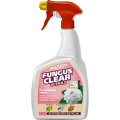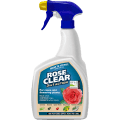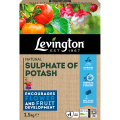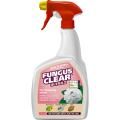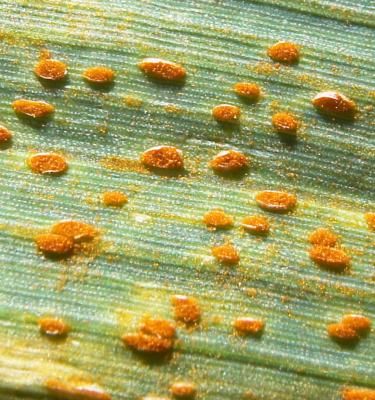

Rust
What is rust?
Whilst rust disease attacks a wide range of plants, it’s important to note that each type of rust is specific to one plant or group of plants. This means that it won’t spread to unrelated plants. Some plants are more susceptible to rust than others, including hollyhocks, irises, fuchsias and edibles like leeks and beans. Grass can also become infected with lawn rust disease but this is usually only a temporary problem.
So, what causes rust disease on plants? Leaf rusts are the fruiting bodies of numerous types of fungus, many of which have complex life-cycles which produce different types of spores depending on the time of year. Rust spores prosper in a moist environment.
Rust can be one of the most difficult plant diseases to control once established, but there are some things you can do to both control and prevent rust on plants.
How to identify rust?
What is leaf rust? As the name suggests, many rust diseases present as orange rust on plants in the form of spots, patches or raised blisters. Rust spots on leaves can also come in a variety of shades from bright yellow to dark brown. The colour of the rust spots can darken as the disease matures and the seasons change from spring through to autumn.
Rust plant disease develops mostly on leaves, but also on stems.
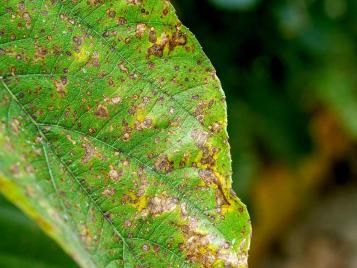
Rust symptoms and damage
What does rust on plants look like? As well as rust-coloured spots, patches or blisters, plant rust disease symptoms can include jelly-like ‘cluster-cups’ which contain spores. Where the rust is severe in plants such as hollyhocks, the leaves wither and drop off. Where rust occurs on bean plants, the crop will likely be reduced.
The presence of rust disease will likely indicate an already weakened plant, so it’s important to also check for other signs of diseases or infestations.
Rust treatment and control
Do you want to know how to stop rust on plants? Try these suggestions:
- Remove and destroy all leaves and plant parts affected by rust.
- You might have to destroy badly infected plants completely to prevent them infecting other plants of the same species.
- Spray with a suitable rust control product containing fungicide, repeating as recommended. There are no chemicals approved for control of diseases on edible plants.
- Lawn rust treatment: Mow regularly to reduce the number of affected leaves, remove the clippings and improve air circulation by pruning overhanging trees and shrubs.
- Pear rust treatment includes removing any juniper bushes in your garden, as they can host the fungus which causes rust on pear trees.
- Treat leaf rust on roses by pruning out infected stems in the spring. If the rose is also infested with bugs such as aphids, spray with a combined insecticide and fungicide. To protect bees and pollinating insects do not apply to plants when in flower. Do not use where bees are actively foraging. Do not apply when flowering weeds are present.
How to prevent rust disease?
You should practice good garden hygiene and some crop rotation to minimise the occurrence of rust:
- Clear debris away from underneath plants likely to be affected by rust, particularly before the winter, because the fungus overwinters on plant debris.
- Grow leeks and other members of the onion family on a fresh site each year.
- Keep plants growing as strongly as possible, without any stress and avoid using high nitrogen fertilisers on susceptible plants because this encourages soft growth which can be more easily infected. High potash feeds help to strengthen plants and prevent rust disease from taking hold.
- Allow enough space around plants to improve air circulation as rust thrives in damp conditions.
- Remove weeds which might harbour rust. For example, willow herb is known to host fuchsia rust, while hollyhock rust can spend some of its life on wild mallow.
- You can minimise leaf rust on fruit trees such as plum trees, by avoiding species known to be susceptible to rust (for example ‘Victoria’) and by not growing anemones which have been found to be linked to plum rust.
